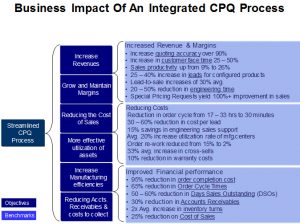— August 1, 2018
The idea of building one’s own company is tantalizing. Countless people in the U.S. start their own business endeavors every year. However, startups experience a sobering mortality rate. According to SmallBizTrends.com, more than half of all small business ventures fail in their first four years of existence.
One of the largest causes of business failure is inadequate cash flow. For small businesses looking to scale, the stakes are high and the margin of error is slim. Many small businesses fail to successfully maneuver the steep climb required to successfully scale their efforts.
If you have begun a new business venture, the following five tips will help boost your chance of success in meeting not only the 5-year mark but hopefully many years beyond.
Get Employees to Take Ownership
Whether you are working alongside your spouse, a few college roommates or a robust team of employees, the way your employees or partners approach their work will often make or break your success as a company. If your team members operate with a “do the bare minimum” mindset or are only motivated by their paychecks, chances are good that you won’t get top-level productivity or problem-solving performance out of your team.
In order to invite your employees to perform at higher levels, you have to create a culture of individual ownership within your company. As included in a list of tips to foster a culture of ownership in your business published by Business 2 Community, try holding regular debrief meetings to encourage feedback and create forums during which you can listen to your employees’ perspectives.
Build productive structures for time-management and performance accountability. And emphasize ownership thinking in your hiring practices.
Stick to Your Roots
As companies grow, the pull of other lucrative markets and the opportunities to step into deals or ventures that don’t match their original purpose become more numerous and tantalizing. Many businesses stray from their founding model, values, or market and can accordingly experience devastating (and even fatal) loss of quality, direction, or customer base.
Countless examples exist of businesses that have experienced turmoil after deviating from their original vision. For example, recent studies on LEGO Group reveals how their 40-year-old business experienced a sharp decrease in profitability in 1998 and in 2003 experienced a 26% loss in sales. LEGO Group took immediate action by enacting a “Back to the Core” marketing campaign, re-focusing their company on what had originally made it successful. The move worked and LEGO is now a multi-billion-dollar company.
Know How to Use Your Data
Data has never before been easier to collect, compile, analyze, and utilize. In fact, because of its accessibility, your ability to utilize data can make or break your company. If you don’t figure out how to employ data effectively, it’s only a matter of time before your competition does.
There are a few tips on how business owners can most effectively employ data including using data to lessen risk by projecting the outcomes of business moves more accurately and improving your product or service to better meet your consumer’s needs by providing better feedback channels and more effectively analyzing the resulting input.
Prioritize Customer Service
One way savvy businesses are gaining advantages over their competition is by prioritizing their customers’ experiences. Thanks to social media, customer service can be easier and cheaper than ever. According to recent academic research, Social customer care costs about $ 1 per interaction while phone support costs at least $ 6. Customers in virtually every sector are spending more and more time on social media platforms, and prioritizing an effective customer service and engagement plan can be a strategic way to develop better customer relationships and retention.
Prioritize Unique Value Propositions
Forbes contributor Eric Wagner points out the critical necessity of a strong Unique Value Proposition (UVP). In today’s market, competition is everywhere and the noise can be deafening. You may have a lightening-fast distribution method, a top-rated sales force, a slick product, or more funding available than you could spend.
You may have every conceivable tool available to you that should make a business successful. However, what makes your business different than all the rest — your UVP — could be the only thing that keeps you from driving all those shiny advantages into the ground while a competitor working out of his basement makes a better value proposition to your customer base.
Resources:
“Five Exciting Business Revival Success Stories” – Ohio University
“Five Reasons 8 Out Of 10 Businesses Fail” – Forbes.com
“How Big Data Can Be Used to Revive Businesses & Organizations” – DCScholarships.org
“How to Get Employees to Take Ownership at Your Agency” – Business2Community.com
“Social Media and Customer Service” – University of Southern California
Business & Finance Articles on Business 2 Community
(33)







